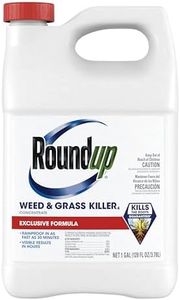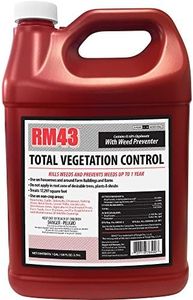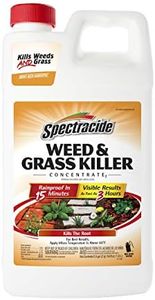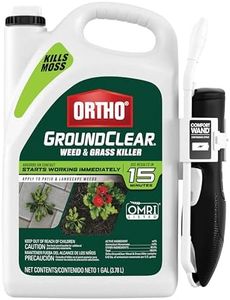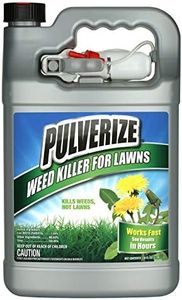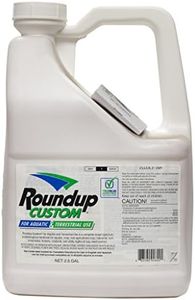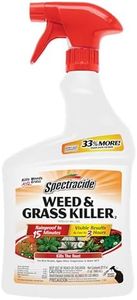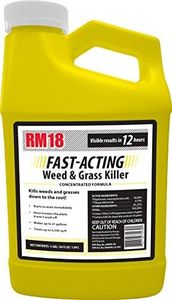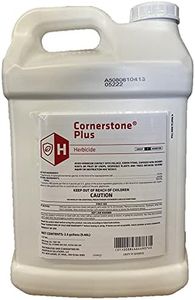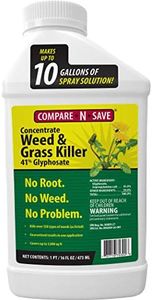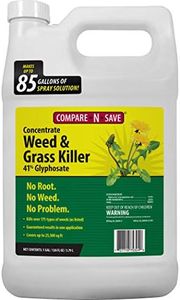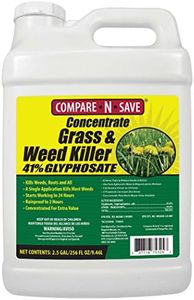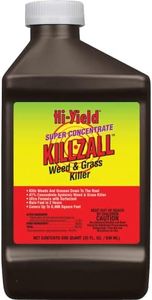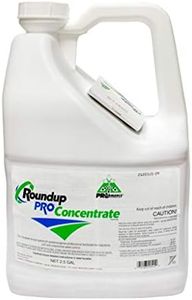10 Best Non-Selective Herbicides 2025 in the United States
Our technology thoroughly searches through the online shopping world, reviewing hundreds of sites. We then process and analyze this information, updating in real-time to bring you the latest top-rated products. This way, you always get the best and most current options available.

Our Top Picks
Winner
Roundup Weed & Grass Killer₄ Concentrate, Use in and Around Flower Beds, Walkways and Other Areas of Your Yard, 1 gal.
Most important from
6238 reviews
Roundup Weed & Grass Killer₄ Concentrate is designed to tackle tough weeds and grasses, including dandelions, crabgrass, poison ivy, and clover. The active ingredients—Triclopyr, Triethylamine Salt, Puazifop-P-Butyl, and Diquat Dibromide—ensure effective weed control. This product is rainproof within 30 minutes, which is particularly handy for unpredictable weather conditions, and it shows visible results in just a few hours, making it a quick solution for your yard maintenance needs.
Additionally, you can plant in treated areas 1 to 30 days after application, providing flexibility for garden planning. The concentrate needs to be mixed according to label directions and can be applied using a tank or hose-end sprayer, covering up to 300 square feet per gallon. This makes it ideal for use in flower beds, around trees, along fences, driveways, walkways, and other yard areas. One notable strength is its versatility and effectiveness in various settings.
However, it's essential to follow the instructions carefully to avoid damaging desired plants, as it is a non-selective herbicide and will kill most plants it comes into contact with. The environmental impact should also be considered, as the chemicals involved can affect non-target plants and potentially contaminate soil and water if not used responsibly. In summary, Roundup Weed & Grass Killer₄ Concentrate is a powerful and fast-acting herbicide suitable for a wide range of yard applications, but it requires careful handling and application to ensure safety and effectiveness.
Most important from
6238 reviews
RM43 Concentrated Extended Control Weed Killer
Most important from
9840 reviews
The RM43 Concentrated Extended Control Weed Killer is designed for serious weed control and promises total vegetation elimination for up to one year. Its active ingredient is glyphosate, which is highly effective but also controversial due to its environmental impact. The product comes as a concentrated liquid that you mix with water and apply using a sprayer, making it straightforward to use.
It covers a significant area of up to 17,297 square feet, making it suitable for large spaces like patios, lawns, and gardens. Once applied, it becomes rainfast relatively quickly, ensuring effectiveness even in unpredictable weather conditions. However, due to its potency, it should be used carefully to avoid unintended damage to desirable plants and vegetation.
With a high customer rating of 4.6 out of 5 stars from over 6,665 reviews, it appears to be well-regarded by users for its effectiveness and ease of use. This herbicide is best suited for those looking to achieve long-term weed and vegetation control in large areas, but it's important to use it responsibly due to its strong formulation.
Most important from
9840 reviews
Spectracide Weed And Grass Killer Concentrate 64 Ounces, Use On Patios, Walkways And Driveways
Most important from
7365 reviews
Spectracide Weed and Grass Killer Concentrate is a liquid spray herbicide designed for use on patios, walkways, and driveways to eliminate unwanted weeds and grasses. It comes in a 64-ounce concentrated form that covers about 2,742 square feet, making it suitable for medium to larger outdoor areas. The product is a non-selective herbicide, meaning it kills most plants it contacts, which is helpful for clearing an entire area without targeting specific weeds. Its spray application method is straightforward and commonly used for spot treatments or broader coverage.
Customers rate this product highly, with a 4.6 out of 5 stars average based on over 5,000 reviews, indicating effective weed control performance. Users should follow label instructions carefully to avoid harm to desirable plants or nearby water sources. This product is a solid choice for homeowners needing a strong, easy-to-use weed killer for hard surfaces, though those seeking organic or eco-friendlier options might want to consider alternatives.
